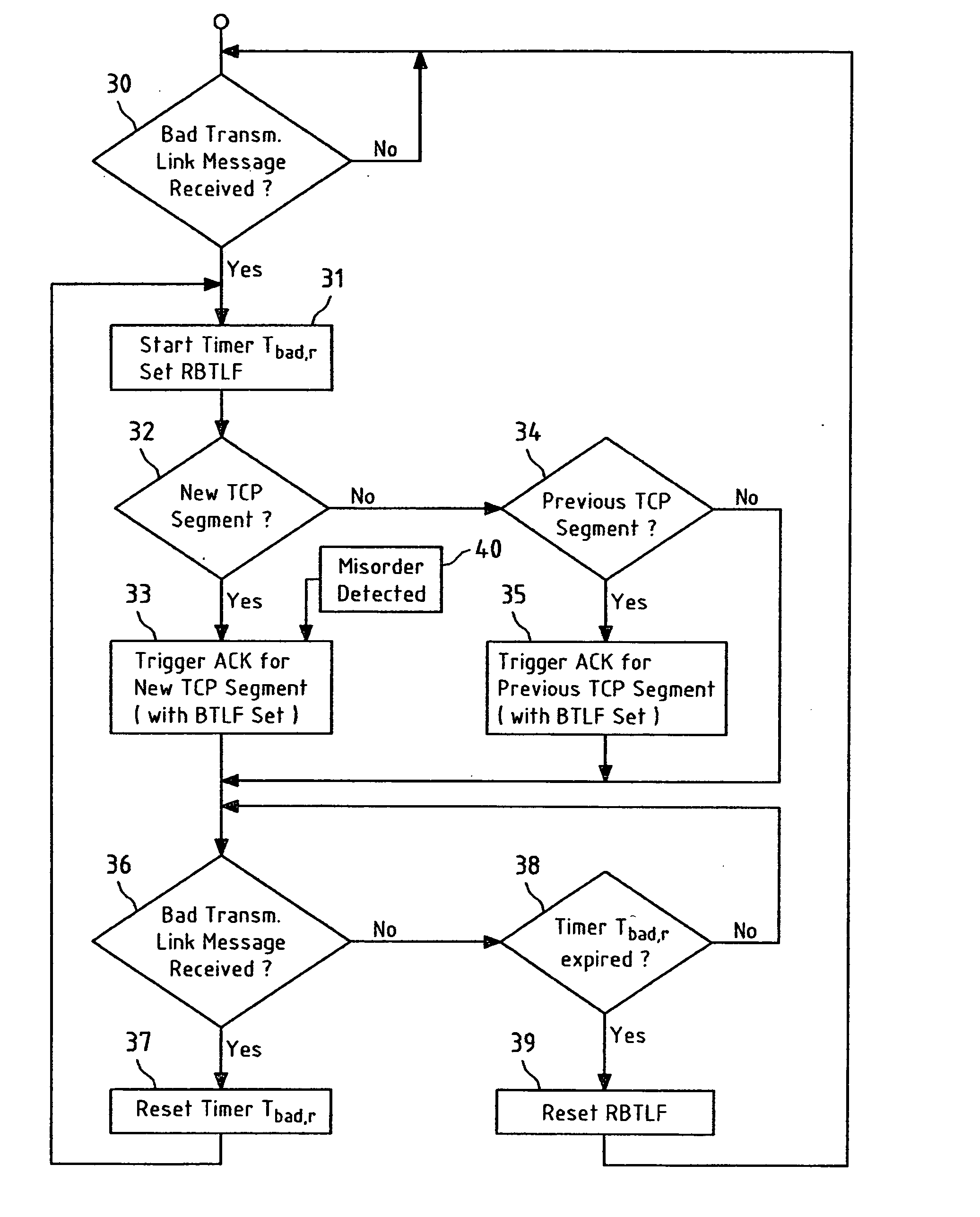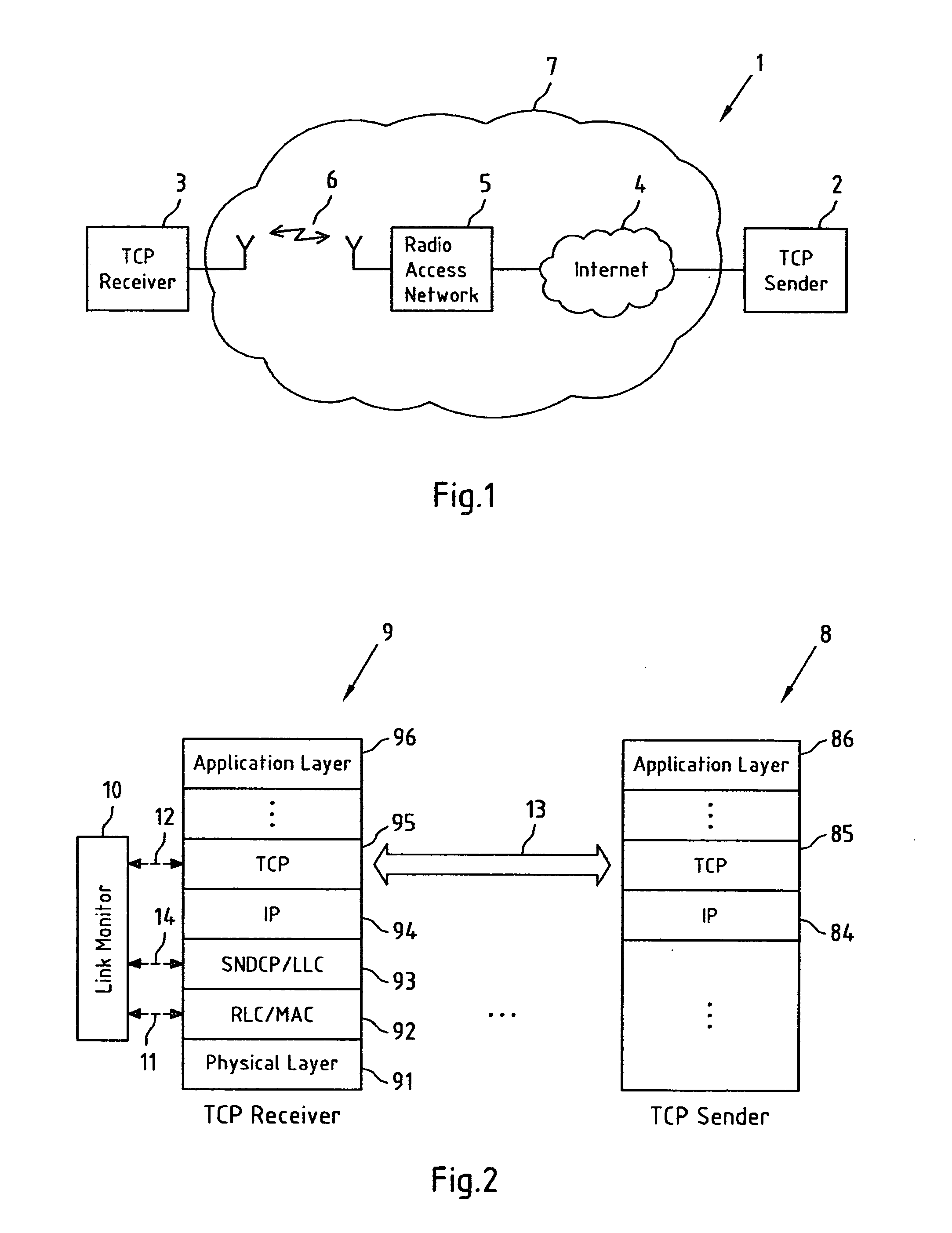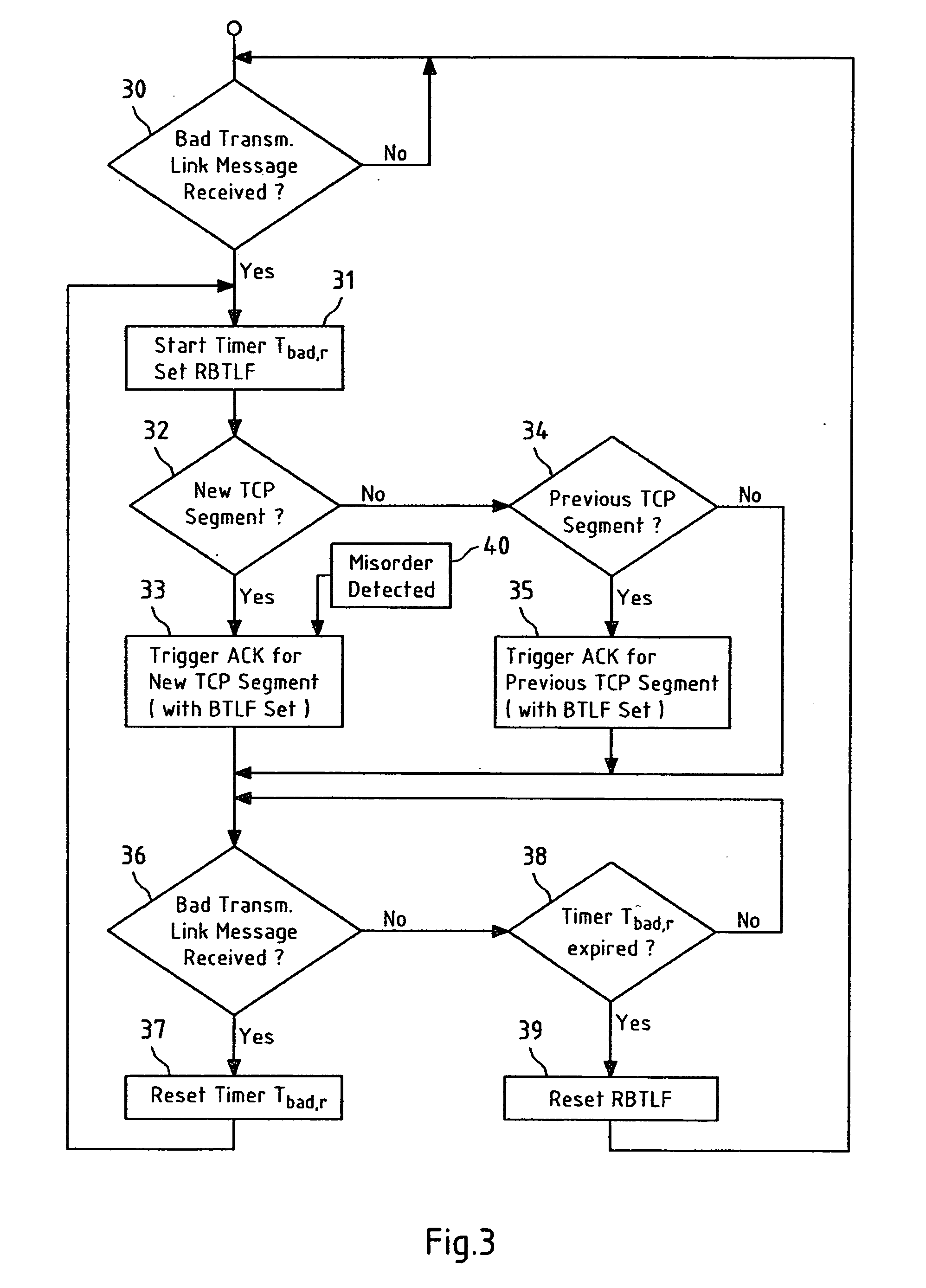Signaling a state of a transmission link via a transport control protocol
a transmission link and transport control technology, applied in the field of transmission link state signaling, can solve the problems of congestion, too large congestion window, and limited tcp connection through the size of the receive buffer, so as to reduce the size of said congestion window
- Summary
- Abstract
- Description
- Claims
- Application Information
AI Technical Summary
Benefits of technology
Problems solved by technology
Method used
Image
Examples
Embodiment Construction
[0086] As an initial remark, it should be noted that the subject-matter of the introductory part of this patent application may be used to support this detailed description.
[0087] The present invention relates to a method for transferring data segments between a sender and a receiver, wherein one or more data segments are sent from said sender to said receiver, wherein one or more acknowledgements are sent from said receiver to said sender and received at said sender, and wherein said acknowledgements acknowledge reception of said sent data segments at said receiver and contain information on whether at least one transmission link within a data network between said sender and receiver undergoes bad transmission conditions. Said information then may be exploited by said sender to adapt the process of sending data segments to the state of the data network. In this detailed description of the invention, exemplarily frequent reference will be made to a system that is operated according...
PUM
 Login to View More
Login to View More Abstract
Description
Claims
Application Information
 Login to View More
Login to View More - R&D
- Intellectual Property
- Life Sciences
- Materials
- Tech Scout
- Unparalleled Data Quality
- Higher Quality Content
- 60% Fewer Hallucinations
Browse by: Latest US Patents, China's latest patents, Technical Efficacy Thesaurus, Application Domain, Technology Topic, Popular Technical Reports.
© 2025 PatSnap. All rights reserved.Legal|Privacy policy|Modern Slavery Act Transparency Statement|Sitemap|About US| Contact US: help@patsnap.com



